In cooperation with Björn, it is splitted on "Disease is Different" into the sections by organ systems and combined with the real cases of our international testimonial / report archive of the related organ system.
MUSCULAR SYSTEM
There are two kinds of muscle tissue: the involuntary (smooth) muscles of the internal organs, which are controlled by the midbrain of the brainstem and the voluntary (striated) muscles of the of the musculoskeletal system, which are controlled by the cerebrum.
This chapter is about the voluntary (striated) muscles. These are controlled by two different parts of the brain:
1. The cerebral white matter – responsible for muscle nutrition.
2. The cerebral cortex – responsible for the muscle innervation/transmission of neural stimulation.
In the SBS described below, they are usually coupled with each other; i.e., they often operate concurrently. However, most muscle symptoms, like paralysis, cramps, epilepsy and Parkinson’s, stem from the SBS of the muscle-nerve supply (below).
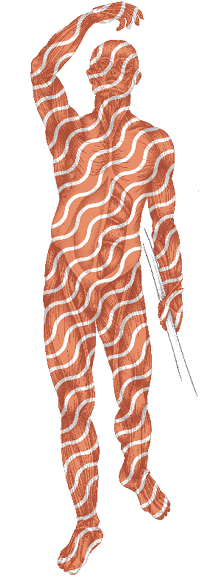
BASIC SEQUENCE1
The motor nerve impulses – i.e., the tensing and relaxing commands, come from the motor cortex of the cerebral cortex:
| Conflict | Motor conflict, most often due to a real fall, accident, or injury. In a figurative sense: paralyzing fear = conflict, not being allowed, wanting or able to move. Not being able to escape a situation. One feels abandoned, unable to cope, doesn’t know which way is up. Phrases: “Paralyzed with fear.” “Frozen by the shock.” “At a loss for what to do.” Back muscles: Not being able to escape from someone or from something, inability to protect oneself. Shoulder musculature: Feelings of guilt, inability to embrace or bring someone closer. Leg and arm flexor and adductor muscles: Feeling unable to hold, bring closer or embrace someone or something. Leg and arm-extender and abductor muscles: Unable to push, punch, kick or shove someone or something away, fend off. Legs in general: Not being able to get away, escape, go with or catch up. Not being able to (fast enough) run, climb, go up or go down, dance, jump, balance, etc. “My knees go weak!” |
|---|---|
| Tissue | Voluntary (striated) muscles – cerebral cortex – ectoderm (nerve supply = innervation). |
| Conflict-active | Restriction of nerve function, less and less stimuli from the cortical motor center to the muscle. > Weakness, paralysis, depending on the intensity of the conflict. Possible restlessness, fidgeting. |
| Bio. function | Play-dead reflex: Many animals instinctively stop when they see a predator or are being chased and the situation seems hopeless. The predator, then, often can’t spot the prey’s movement (birds) or lets its prey be (e.g., cats are only interested in moving/living objects and not in motionless/dead prey). The motto: “Don‘t move until the danger has passed!“ Video: https://www.youtube.com/watch?v=UPr_Eh647hg |
| Repair phase | Restoring innervation after initial deterioration. |
| Repair crisis | Uncoordinated twitching and convulsions = epileptic seizure. Local spasm = muscle spasm, muscle twitching. Feeling cold, cold chills. Possibly tics, restless legs. |
| Note | Warning: At the beginning of the repair phase and after the repair phase crisis, the paralyses can even be briefly stronger if edema causes the nerve connections in the brain to swell. While this is actually a good sign, it is often wrongly interpreted by the patient, which can lead to a fatal, vicious circle. Many muscle problems are caused by poisoning with medication. As such, they have no psychic cause. There is often a combination of conflict and poisoning. The usual suspects here are often blood pressure medication, cholesterol-lowering medication, psychotropic drugs and many more. > Read the information on the package. Take note of any link between when the medication was first taken and any symptoms. |
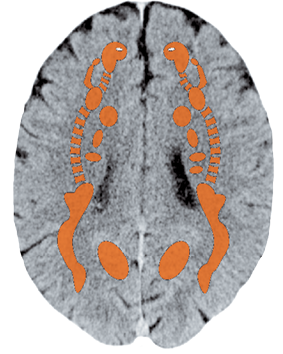
Basic SEQUENCE1
The metabolic control (nutrition, the growth and breakdown of tissue) originates in the cerebral white matter.
| Conflict | Self-esteem conflict with regard to mobility (for conflict details, see pp. 353 and 377). |
|---|---|
| Tissue | Voluntary (striated) muscle – new mesoderm – nutrition, metabolism. |
| Conflict-active | Limited nutrition, muscle deterioration in the affected muscle(s), muscle weakness (necrosis, atrophy). |
| Repair phase | Restoration of the muscles accompanied by pain, swelling, enlarged muscles (hypertrophy). |
| Bio. function | Strengthening beyond the original state (luxury group). |
1 See Dr. Hamer, Charts pp. 61, 72
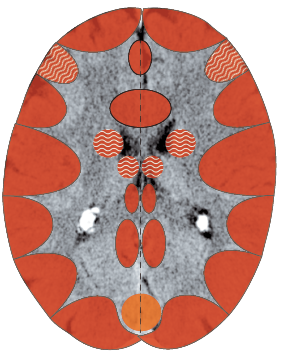
Muscle paralysis, multiple sclerosis (MS), polio, amyotrophic lateral sclerosis (ALS)1
In MS, the (myelin) nerve sheaths in the central nervous system become inflamed and cannot fulfil their task of quickly transmitting neural stimuli.
Thus, this SBS is about command transmission.
| Conflict | Motor conflict. Paralyzing fear. Conflict of not being able, or allowed to move. (See: p.377). According to Dr. Sabbah: Obedience conflict. One believes that they always have to carry out all commands. They resist, but wind up submitting nonetheless. The beginning of this conflict may lie in the childhood years: One is broken (tamed) during the defiant phase. Saying no is not allowed – authority must be obeyed mercilessly. |
|---|---|
| Examples |  A 63-year-old is never bored, not even in retirement. He spends his time as an amateur athlete and handyman. One day, he has a skiing accident and breaks his hips. He must endure four months of complete bed rest = motor conflict of not being able to move. After the long, forced rest, he is sent to rehabilitation and makes excellent progress. He realizes that he is his old self again = conflict resolution. Then he starts having nighttime cramps in his lower legs. The cramps continue for weeks and keep getting stronger. He finds these spasms more painful than the broken hips = motor conflict because of the cramps = vicious circle. After many consultations with doctors, he is sent to the hospital where they do a lumbar puncture, an MRI and nerve conduction tests. Suddenly he sees the worried expressions on the doctors‘ faces: the diagnosis is ALS. He is told about the “progressive symptoms“ ending in death via suffocation due to general paralysis = generalized motor conflict of knowing he is soon to be completely paralyzed. Within half a year, the disease advances so far that the one-time amateur athlete has to sit in a wheelchair all day and at night cannot even turn over in bed = vicious circle and fulfillment of the prognosis (= the self-fulfilling prophecy). A truly tragic case. (Archive B. Eybl) A 63-year-old is never bored, not even in retirement. He spends his time as an amateur athlete and handyman. One day, he has a skiing accident and breaks his hips. He must endure four months of complete bed rest = motor conflict of not being able to move. After the long, forced rest, he is sent to rehabilitation and makes excellent progress. He realizes that he is his old self again = conflict resolution. Then he starts having nighttime cramps in his lower legs. The cramps continue for weeks and keep getting stronger. He finds these spasms more painful than the broken hips = motor conflict because of the cramps = vicious circle. After many consultations with doctors, he is sent to the hospital where they do a lumbar puncture, an MRI and nerve conduction tests. Suddenly he sees the worried expressions on the doctors‘ faces: the diagnosis is ALS. He is told about the “progressive symptoms“ ending in death via suffocation due to general paralysis = generalized motor conflict of knowing he is soon to be completely paralyzed. Within half a year, the disease advances so far that the one-time amateur athlete has to sit in a wheelchair all day and at night cannot even turn over in bed = vicious circle and fulfillment of the prognosis (= the self-fulfilling prophecy). A truly tragic case. (Archive B. Eybl) A 43-year-old woman has a job in an office. When a colleague goes on vacation, she has to pick up the slack for a whole month. She is hardly able to handle all the work = conflict, believing that she has to carry out all orders. When her colleague returns, the woman enters a phase of vagotonia. Her repair phase includes dizziness, headaches and slight visual disturbances. Her doctor diagnoses her with, “Suspicion of MS.” The woman eventually goes into early retirement as an MS patient. Fortunately, she learns about the New Medicine, stops letting herself be intimidated by the diagnosis and manages a complete recovery. (Archive B. Eybl) A 43-year-old woman has a job in an office. When a colleague goes on vacation, she has to pick up the slack for a whole month. She is hardly able to handle all the work = conflict, believing that she has to carry out all orders. When her colleague returns, the woman enters a phase of vagotonia. Her repair phase includes dizziness, headaches and slight visual disturbances. Her doctor diagnoses her with, “Suspicion of MS.” The woman eventually goes into early retirement as an MS patient. Fortunately, she learns about the New Medicine, stops letting herself be intimidated by the diagnosis and manages a complete recovery. (Archive B. Eybl) A 50-year-old, right-handed woman goes to a neurologist with steady, acute pain in the face. He prescribes painkillers and anti-depressants. For both prescriptions, paralysis is mentioned as possible side effects. After several weeks, the patient notices light paralysis of the right leg. The facial pain remains. After several consultations with neurologists, along with a CT scan and lumbar puncture, the diagnosis is multiple sclerosis (MS) = motor conflict due to the diagnosis. The patient sees herself in a wheelchair and buys a cane, which she doesn‘t even need yet > the paralysis intensifies > the vicious downward spiral begins. (Archive B. Eybl) A 50-year-old, right-handed woman goes to a neurologist with steady, acute pain in the face. He prescribes painkillers and anti-depressants. For both prescriptions, paralysis is mentioned as possible side effects. After several weeks, the patient notices light paralysis of the right leg. The facial pain remains. After several consultations with neurologists, along with a CT scan and lumbar puncture, the diagnosis is multiple sclerosis (MS) = motor conflict due to the diagnosis. The patient sees herself in a wheelchair and buys a cane, which she doesn‘t even need yet > the paralysis intensifies > the vicious downward spiral begins. (Archive B. Eybl) |
| Phase | Active-phase, persistent conflict activity. > Weakness or paralysis of the muscle. |
| Note | Even for CM, the diagnosis for multiple sclerosis (MS) is imprecise. The proteins measured in the cerebrospinal fluid (CSF) also appear in healthy samples. In the CT and MRI, dubious “white flecks“ are sought, which are also found in everyone. A diagnosis of MS usually triggers another motor conflict (which is worse) than the original one. Some patients see the wheelchair before their eyes (post-hypnotic engram). This conflict can often no longer be overcome = persistent-active conflict as a result of the doctors‘ diagnoses (iatrogenic). A small percentage of paraplegics also belong to this group of thusly damaged patients. |
| Further causes | 1. Accidents or unsuccessful surgeries (mechanical paralysis – severing of the nerve). 2. Poisoning, e.g., with chemicals, medication (toxic paralysis), e.g., aspartame. 3. Brain pressure (edema) on the surrounding motor relays (usually a self-esteem conflict in healing). |
| Questions | When did the symptoms begin? (Conflict beforehand. Close to the time of a sudden onset of symptoms. With a disease that comes on slowly, the conflict could have happened years before). Only weakness/paralysis? (Yes > purely conflict-active). Cramps/spasms also? (Yes > intermittent repair phases). Which part of the body was affected first? (One can deduce the conflict from the affected muscle groups, see: pp. 353 and 377). Mother/child or partner side? (Clap test). Was there a fall or an accident? (Typical motor conflict). Was there an obedience conflict? Am I always obedient and conformist? Was my defiant spirit broken in childhood? Muscular diseases among ancestors? (Yes > indication of a family issue > work out the affected family member’s exact issue/conflict). Which other conditioning comes into play? How was the pregnancy? (Accidents, obedience conflict for the mother)? How was the birth? (Often a reason for motor conflicts). Does the disease also provide me with benefits? (I receive love/care, don’t have to struggle anymore, don’t have to exert myself anymore, don’t have to listen to orders anymore). Do the advantages outweigh the disadvantages? (If yes, this will be an impediment to getting better > one has to be honest with oneself about what one really wants). Which inner changes do I want to make? Would, e.g., a special healing-meditation make sense? Which measures to I want to use externally? |
| Therapy | Determine the conflict and conditioning and, if possible, resolve them in real life. Very important: understanding the interrelations. Guiding principles: “Now I know what‘s going on and I will free myself from the spell!“ “I will be able to move as before!“ Movement therapy, but without (self-applied) pressure to succeed. All of the stimulating treatments like classic, acupoint and reflex-zone massages. Cayce: Vigorous massage with peanut oil or olive oils with tincture of myrrh. Swimming, gymnastics, yoga, etc. Magnesium chloride (MgCl2) – foot baths. (Source: www.salz-schwarzmann.de). Sunbathing – possibly solarium. Brushing and contrast baths. MMS (see p. 68). Vitamin B complex. Liniments with rosemary, cinnamon or camphor oil. Cod liver oil (see p. 68). CM therapies with cortisone, beta-interferon and many more are not recommended because they are not effective. See also: further measures, p. 380. |
Muscle spasms
| Examples |  In winter, the patient is driving down a steep mountain road. Suddenly she realizes she is driving too fast and won‘t be able to make the next curve = motor conflict of not being able to brake. Thanks to a snow pile, the car comes to a stop just before the abyss. During the next three nights, she has severe cramps in her right (“brake“) calf = healing- phase – repair phase crisis. (Archive B. Eybl) In winter, the patient is driving down a steep mountain road. Suddenly she realizes she is driving too fast and won‘t be able to make the next curve = motor conflict of not being able to brake. Thanks to a snow pile, the car comes to a stop just before the abyss. During the next three nights, she has severe cramps in her right (“brake“) calf = healing- phase – repair phase crisis. (Archive B. Eybl) An older mountain climber has trouble keeping up with a younger group = motor conflict of not being able to keep up. After the tour, she suffers severe thigh cramps = repair phase. This happens every time she goes hiking with this group. When she goes alone, she has no cramps afterwards. (Archive B. Eybl) An older mountain climber has trouble keeping up with a younger group = motor conflict of not being able to keep up. After the tour, she suffers severe thigh cramps = repair phase. This happens every time she goes hiking with this group. When she goes alone, she has no cramps afterwards. (Archive B. Eybl) |
|---|---|
| Phase | Repair phase crisis (= epileptic crisis) in the course of the repair phase. Possibly a recurring-conflict. |
| Note | Cramps always arise during rest or after strain. The prior paralysis is, normally, not perceived. The cramp is a “local epilepsy.“ Generalized cramp = “real epilepsy“ (see: p.381). Consider “handedness“ (right or left) and side (mother/child or partner) or local conflict. |
| Questions | Which muscle group? (= Indication of the conflict. Which activity was I doing before the cramp appeared? (Conflict usually directly beforehand or the day before). Mother/child or partner related? (Clap test). Why couldn’t I deal with the situation? Which emotions were in play? What has conditioned me in this regard? |
| Therapy | Determine the conflict or trigger(s) and resolve them in real life so that the conflict comes to an end. Nighttime cramps usually stop if one gets up out of bed (= end of the vagotonic repair phase crisis). Magnesium chloride (MgCl2) – foot baths. Hildegard of Bingen: leg cramps: liniments with olive oil and some genuine rose oil, sage ointment – special recipe. Vitamin B complex in yeast products (e.g., brewer‘s yeast). Linseed oil, Vitamin D3, cod liver oil (see p. 68). |
Spasticity
| Examples |  During the last term of the pregnancy, the unborn child experiences its parents‘ countless, loud arguments = motor conflict of not being able to run away > in the active-phase – paralysis of the calf muscles; in the repair phase crisis – cramps; in persistent repair – permanent cramps > the child is born with talipes equinovarus (clubfoot). After the birth, the parents continue to argue. (See Dr. Hamer, Goldenes Buch, Bd. 2, p. 419). During the last term of the pregnancy, the unborn child experiences its parents‘ countless, loud arguments = motor conflict of not being able to run away > in the active-phase – paralysis of the calf muscles; in the repair phase crisis – cramps; in persistent repair – permanent cramps > the child is born with talipes equinovarus (clubfoot). After the birth, the parents continue to argue. (See Dr. Hamer, Goldenes Buch, Bd. 2, p. 419).➜ Motor conflicts are often caused by ultrasound examinations and tests of the amniotic fluid during pregnancy or inoculations later in life if the child is restrained. |
|---|---|
| Phase | Persistent repair with emphasis on the repair phase crisis – permanent tension in the affected muscles. The advantage of persistent repair is that the complaints can immediately improve after conflict resolution. |
| Questions | Which muscle group? (= Indication of the conflict. Most often, the arm flexing musculature is affected > conflict of not being able to hold on). Side mainly affected, handedness? Further questions: see: p.381. |
| Therapy | Determine the conflict and conditioning and, if possible, resolve them in real life so that the persistent repair can come to an end! Magnesium chloride (MgCl2) – foot baths, physiotherapy, occupational therapy, hydrotherapy. Dance and music therapy, therapeutic riding. Cannabis oil, vitamin B complex in yeast products. Linseed oil, cod liver oil (see p. 68). Acupuncture (see p. 68), classic, acupoint and reflex-zone massages. Sunbathing, possibly solarium. If necessary, low-dose naltrexone (LDN). |
Restless legs syndrome, motor neuropathy
| Conflict | Motor conflict, not knowing the way in or out, not being able to escape or catch up, not being able to run (see: p.377). |
|---|---|
| Phase | Restless legs: Repair phase crisis (= epileptic crisis) during the repair phase, usually persistent repair: the symptoms appear during rest periods (vagotonia). The restless legs accomplish what one couldn’t/wasn’t allowed to do during the period of stress. Motor neuropathy: Can be diagnosed due to convulsions, paralysis, muscular atrophy, limited reflexes. Altogether an unnecessary disease classification. Mostly a recurring-conflict. |
| Therapy | Determine the conflict and conditioning and, if possible, resolve them in real life so that the persistent repair can come to an end. Magnesium chloride (MgCl2) – foot baths. Cannabis oil. Classical massage, lymphatic drainage, acupuncture (see p. 68), reflexology. Swimming, gymnastics, yoga, etc. |
Epilepsy
Motor conflict corresponding with the location (see pp. 353 and 377)).
Patients who suffer from repeated, spontaneous convulsions, with or without loss of consciousness, are conventionally diagnosed with epilepsy.
Parkinson‘s disease
According to CM, Parkinson’s is a slow, progressive, degenerative disease of the brain.
Typical symptoms: muscular trembling (tremor), muscle stiffness (rigidity) and slowness of movement (bradykinesia)
| Conflict | According to Dr. Sabbah, motor conflict that the person is trembling in front of someone else or others tremble before the person. Also, according to my experience, that one absolutely (with force) wants to change others. It definitely has to do with the issues of aggression, authority, coercion and fear. Parkinson’s trio: 1. Trembling: “Shaking like a leaf.” Trembling means fear. 2. Muscle stiffness: “Paralyzed by fear.” 3. Slowness of movement: When a cat (or human) wants to avoid a fight, they often slink away from the danger in “slow-motion” instead of bolting. Expression: “Don’t make any sudden moves!” |
|---|---|
| Examples |  A forty-year-old businessman has a major customer who he has delivered goods to for years. Due to a cost-reduction program, the customer takes bids from other providers. After a great deal of back and forth, the businessman loses his customer = motor conflict of not being able to hold onto the customer with his hands. For 20 years, the conflict has been persistently active = Parkinson‘s disease – trembling hands. (Archive B. Eybl) A forty-year-old businessman has a major customer who he has delivered goods to for years. Due to a cost-reduction program, the customer takes bids from other providers. After a great deal of back and forth, the businessman loses his customer = motor conflict of not being able to hold onto the customer with his hands. For 20 years, the conflict has been persistently active = Parkinson‘s disease – trembling hands. (Archive B. Eybl) A 70-year-old retiree started developing Parkinson’s symptoms some months ago. In his childhood, his father hit him regularly, “usually even before dinner.” He also raised his child with a similar strictness and he is sorry for it to this day. = Conflict that others tremble before him. During a meditation, he learns that the men in his family have been extremely strict for 6 generations. (Archive B. Eybl) A 70-year-old retiree started developing Parkinson’s symptoms some months ago. In his childhood, his father hit him regularly, “usually even before dinner.” He also raised his child with a similar strictness and he is sorry for it to this day. = Conflict that others tremble before him. During a meditation, he learns that the men in his family have been extremely strict for 6 generations. (Archive B. Eybl) The Parkinson‘s patient, Muhammad Ali, reported that he regularly dreamt of his fight with Joe Frazier. During this fight, he suffered his first and probably most painful defeat. In doing so, he suffered the following conflict: Trembling before someone > shaking hands. The tremors and paralysis represent the repair phase, or more exactly, the repair phase crisis that never ends (= persistent repair). The Parkinson‘s patient, Muhammad Ali, reported that he regularly dreamt of his fight with Joe Frazier. During this fight, he suffered his first and probably most painful defeat. In doing so, he suffered the following conflict: Trembling before someone > shaking hands. The tremors and paralysis represent the repair phase, or more exactly, the repair phase crisis that never ends (= persistent repair). A 75-year-old man came down with Parkinson’s after retiring. His right arm would tremble more than the left. His therapist asked him about his career and learned that he was the conductor of a large orchestra. After his retirement, he has been leading a small folk music ensemble. Unfortunately, these amateur musicians’ skills are terribly disappointing. = Motor conflict, that he can’t properly conduct the musicians he’s now with – they aren’t good enough. For therapy, he asked the patient to conduct: “What is your favorite march? … Then conduct it right now for two or three minutes.” The patient, “No, the march lasts 3 min. and 14 sec.” Out of curiosity, the therapist kept an eye on the time. Without music, the patient began conducting with a passion. With the final note, 3 min. 41 sec. had passed. The conductor was standing there calmly. His arms were calm, everything was calm. After that, his Parkinson’s never returned. (Archive B. Eybl) A 75-year-old man came down with Parkinson’s after retiring. His right arm would tremble more than the left. His therapist asked him about his career and learned that he was the conductor of a large orchestra. After his retirement, he has been leading a small folk music ensemble. Unfortunately, these amateur musicians’ skills are terribly disappointing. = Motor conflict, that he can’t properly conduct the musicians he’s now with – they aren’t good enough. For therapy, he asked the patient to conduct: “What is your favorite march? … Then conduct it right now for two or three minutes.” The patient, “No, the march lasts 3 min. and 14 sec.” Out of curiosity, the therapist kept an eye on the time. Without music, the patient began conducting with a passion. With the final note, 3 min. 41 sec. had passed. The conductor was standing there calmly. His arms were calm, everything was calm. After that, his Parkinson’s never returned. (Archive B. Eybl) |
| Phase | Persistent repair – Recurring healing crises, tremor, muscle rigidity, slowing of movement (= Parkinson‘s disease); the conflict activity is only briefly touched by recurrences or triggers. The repair phase dominates but never comes to an end. |
| Note | According to my experience, Parkinson’s can have a run-up time of years. Consider “handedness“ (right or left) and side (mother/child or partner) or local conflict. The affected muscle group shows the way to the conflict. Much like MS, the diagnosis “You have Parkinson‘s!“ can lead to a further motor conflict: the thought, of never being able to keep the hands still again, can become anchored in the subconscious. |
| Questions | With which muscle group did it begin? (Indication of the conflict, see pp. 353 and 377.) Handedness, side? (Clap test). Did it start slowly? (Yes > indication of conflict that lies further back and still persists). Did I make people tremble or was I the victim? (Look for fear situations that still occupy me to this day). Was there a fall/accident that I couldn’t get over? (Consequences until today)? Violent conditioning? (Beatings in childhood, strict parents, ancestors)? What will I change on the inside, on the outside? |
| Therapy | Determine the conflict and conditioning and, if possible, resolve them in real life so that the persistent repair can come to an end. Cannabis oil. Cod liver oil (see p. 68). Magnesium chloride (MgCl2) – foot baths, Vitamin B complex. The effectiveness of the CM drugs for Parkinson’s – L-DOPA and dopamine agonists among others are questionable > not recommended. |
1 See Dr. Hamer, Charts pp. 138, 143

Muscle tension, myosclerosis, myogelosis1
| Conflict | One is tense and believes they always have to do something. Lack of composure. Self-esteem or incompetence conflict corresponding with the location. Conflict details and examples see pp. 353 and 377. For example, neck tension – moral-intellectual self-esteem conflict. |
|---|---|
| Phase | Constant tension of the striated musculature > Recurring–conflict. |
| Note | Unnatural lifestyle or forced position (constant desk-sitting) promotes muscle tension. Take into account “handedness“ (right or left) and side (mother/child or partner) or local conflict. |
| Therapy | Determine the conflict and conditioning and, if possible, resolve them in real life if still active. Guiding principles: “I take everything easy – no need for stress.” “I trust in my abilities.” Reduce stress. Balance intensity (sport) with relaxation phase (nap). Motion variation in everyday life. Varied sports, especially gymnastics and physiotherapy. Yoga, dancing, swimming. Classical, acupoint and reflexology massages. Magnesium chloride (MgCl2) – foot baths. Water treatments, mud wraps and baths, sauna, infrared cabin. Vitamin B complex in yeast products (e.g., brewing yeast), Cannabis oil. |
Muscle distension, torn muscle fibers, ruptured muscles
Even in the case of an injury, an SBS can play a role. Same SBS as above.
| Phase | Conflict-active phase or persistent conflict activity, possibly also repair phase: weakening of the muscle structure, less firmness, making the muscle is more susceptible to injury. |
|---|---|
| Therapy | Classic massage, lymph drainage massage (p. 68), acupoint massage (p. 68), reflex-zone massage, water therapy, mud packs and mud baths, sauna, infrared cabin, physiotherapy; if necessary surgery. |
1 See Dr. Hamer, Charts pp. 61, 72

Muscle pain, fibromyalgia
According to CM, fibromyalgia is an autoimmune disease – a type of rheumatism.
Pain in the musculoskeletal system does not only occur in repair phases, but also during conflict activity.
Everyone knows: If a muscle is overstrained, it will hurt and become sore. This is a signal from the body that the muscle has reached its limit.
Example: Someone who hasn’t had a shovel in their hand for a whole year helps out on the construction site. > Pain in their back/arms after two hours at the latest.
The limits to what they can do can be increased through training. This kind of pain is normal, i.e. not an indication of disease. However, muscle soreness for no apparent reason has conflict as a cause:
| Conflict | Overexertion conflict. According to Dr. Sabbah: It is similar to psoriasis – ambivalence, being conflicted about one and the same subject. However, it may also be an unconscious strategy: Being ill has “advantages” (e.g., receiving more attention/love, remaining a victim, remaining unable to work), see p. 63. |
|---|---|
| Examples | a A thin, 45-year-old woman is overwhelmed: four children, housework and a 30-hour job. During her most intense phases of stress, she regularly experiences severe back pain. It feels better when she lies down. Thanks to regular Pilates classes and sufficient rest, it doesn’t get any worse. (Archive B. Eybl) Organ Just like the bones are covered by a periosteum, muscles and muscle fibers are also covered by sheaths – so-called fasciae. There is likely a thin layer of ectodermal squamous epithelium on the surface of these fasciae. Also, like the periosteum (see: p.361), this is likely to react with increased sensitivity during conflict activity. (A consideration from Antje Scherret) |
| Conflict active | Pain, restriction of movement at the overexerted location due to the increased sensitivity of the fascia. |
| Repair/healing | The pain subsides. |
| Bio function | The pain forces the individual to rest (to protect the locomotor system). Note: In my experience, people with weak corset muscles (midsection) are often affected: Lean, thin types/ectomorphs (according to Kretschmer). Weak muscles reflect the character trait of having little endurance. This SBS is difficult to distinguish from the Muscle Metabolism SBS (p. 383). In any case, the cause of sore muscles lies in the muscles’ metabolism. |
| Questions | When did the pain begin? (Conflict happened at this time) What was burdening me so much at the time? (Ask about their life situation, special incidents, inner mood). Why do I react sensitively to this issue? Do/did parents/ancestors have similar symptoms? (Indication of substitution conflict) Which unresolved ancestral issue am I carrying? (Ask about their life story and look for parallels – a deeper cause often lies here). |
| Therapy | Determine and resolve the conflict, original conditioning and belief structures. Keeping your musculature strong is a lifelong task. Heat, massages, hot baths – all measures that supply energy (see therapy for degenerative joint disease (osteoarthritis) p. 355). |
Muscular dystrophy, muscular atrophy, myasthenia
Possible causes (usually combined):
- Physical inactivity (e.g., being bedridden, handicapped).
- Motor conflict (paralyzed with fear conflict): active-phase or persistent-active: paralysis or weakness of the affected muscle > muscle atrophy (see: p.377).
- Self-esteem conflict: active-phase or persistent-active: muscle degradation, cross-sectional reduction, weakness (see page 353).
- Being underfed or malnourished (e.g., fasting period).
Therapy: according to the cause. All stimulating measures.
All experience reports on the organ system “Muscular System” from the International Report Archive:
| Author | Title and Overview | Keywords | ||||
|---|---|---|---|---|---|---|
 | 2024/08/15   Beginning of a "motor conflict" cycle after watching a video with a person suffering from Tourette's, with strong anxiety, twitching, loss of fine motor skills, etc. - and a deliberate attempt to break out of the vicious cycle. | Tics, Tourette's, multiple sclerosis (MS), dystonia, Parkinson's disease | ||||
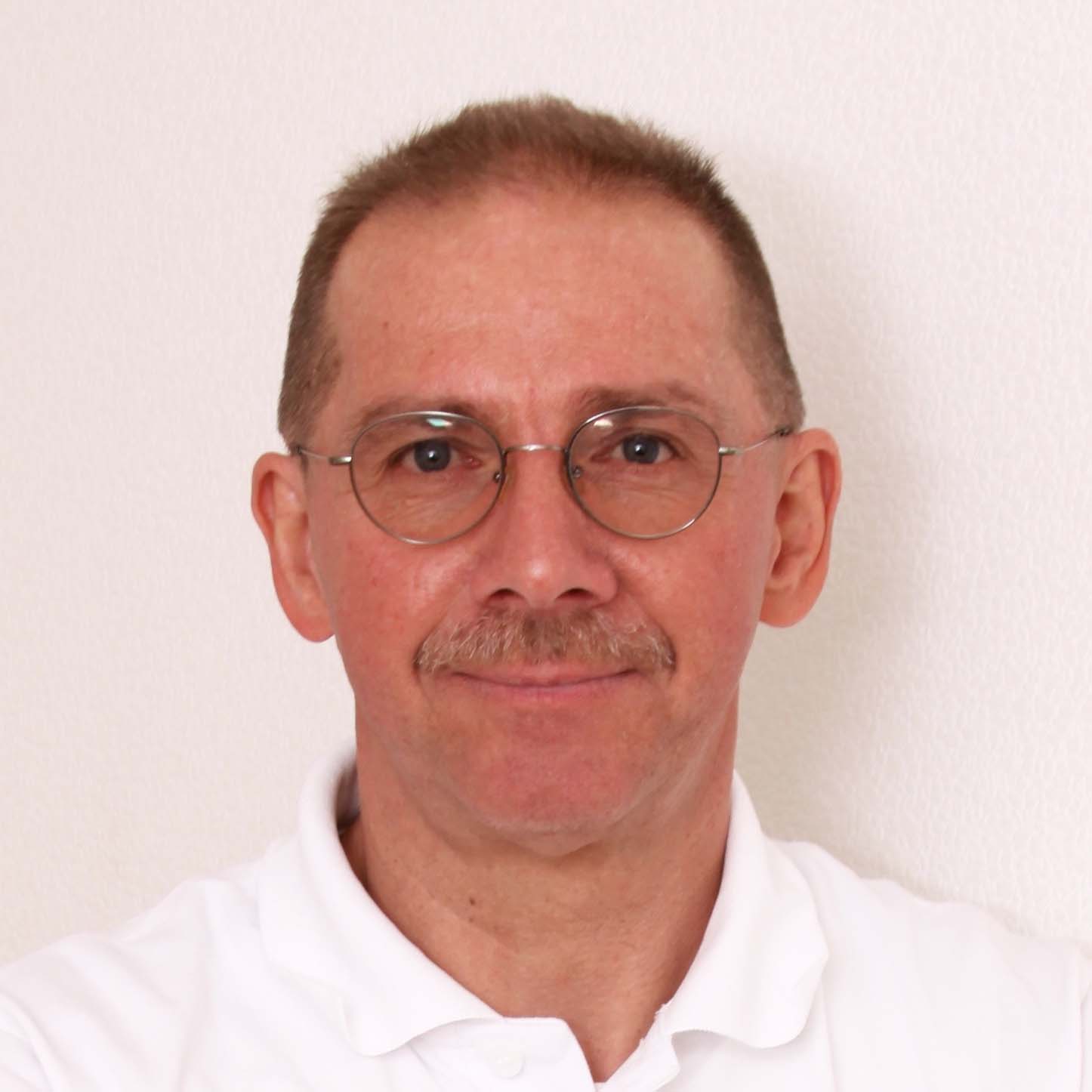 | 2024/04/08   Every evening I fell into bed exhausted and couldn't sleep. My tingling legs didn't leave me alone. Going to the cinema was also unbearable because I had to sit still. | Partially resolved motor conflict, renal collecting duct syndrome | ||||
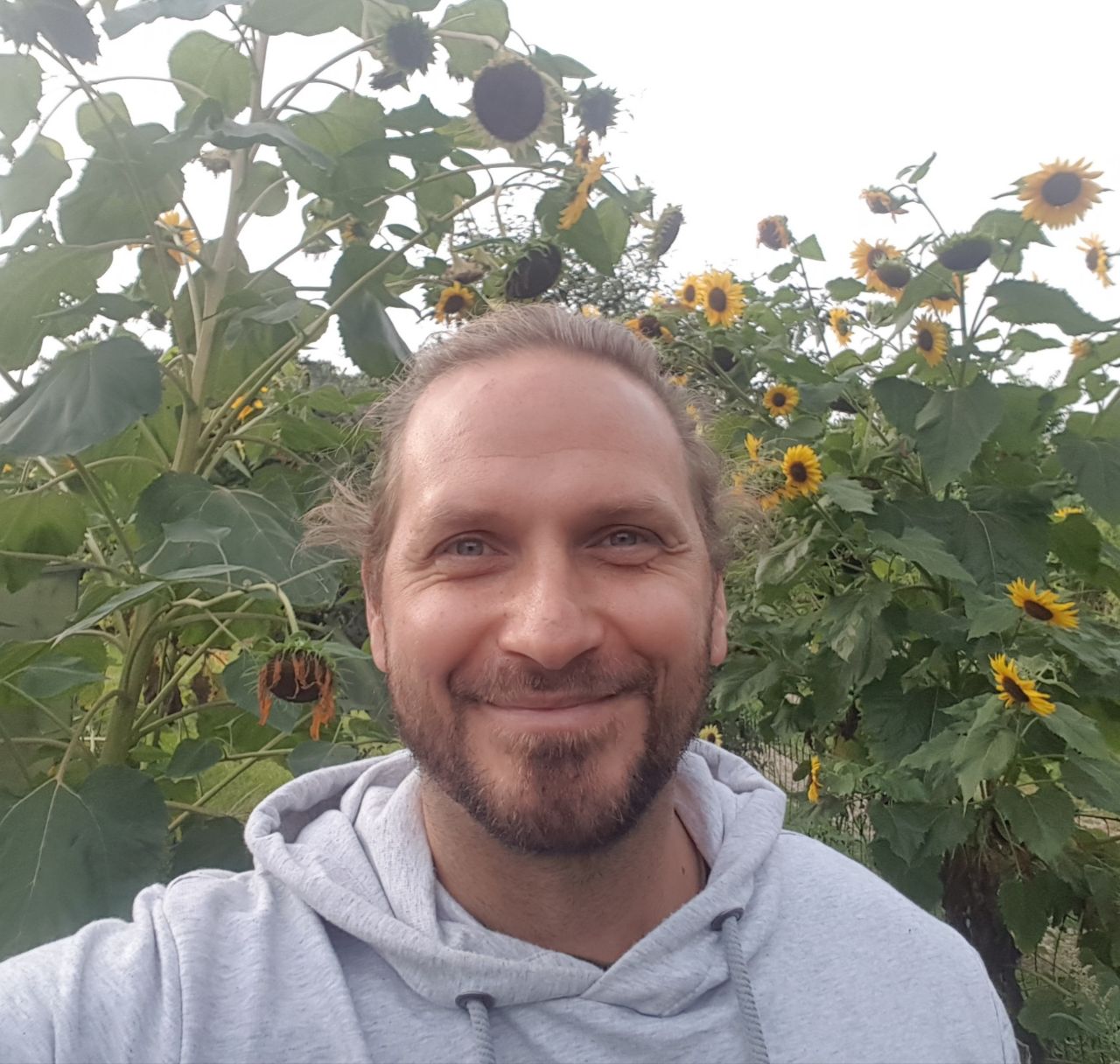 | 2023/11/23   The first stroke occurred in July '17. From the knowledge of the 5 biological laws of nature, we can deduce that there must have been some relief from a particular problem beforehand. The stroke occurs in the healing crisis of a conflict-resolved phase, the so-called healing crisis. What happened? | |||||
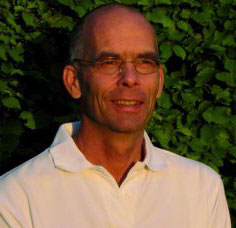 | 2022/11/20  Ich bin an einem Nachmittag im Urlaub barfuß auf der Terrasse herumgelaufen und wollte über eine Mauer schauen. Dabei bin ich mit dem Zeh an einen Stein gestoßen ... | Motorischer Konflikt | ||||
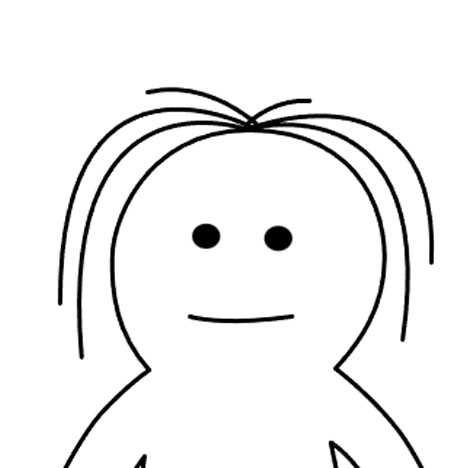 | 2022/09/28  „Oh Schreck“, unsere Luna lag kürzlich gelähmt auf dem Flurboden. Mein erster Gedanke: „Schlaganfall“. Ich war total besorgt und anfangs zu keinem wirklich vernünftigen Gedanken fähig. Was tun? | Lähmung, motorischer Konflikt | ||||
2022/08/04   The present case - documented with video excerpts - is about a 7-year-old boy with two phases of different tics or twitching. At the age of 5, he had a tic for about a month, during which he would always bend his knees a bit and tighten his arms. At 7, he had another tic for two months where he always extended both arms at the same time. | Tics, twitching, motor constellation | |||||
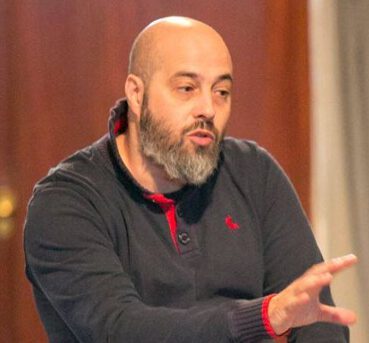 | 2021/08/05     A woman with medicated epilepsy attacks since the age of 12, in the absence of medication, she had an attack after 30 minutes. | Epilepsy | ||||
2021/06/30    These are the testimonials (in brief) of the first seven successfully resolved allergies of the participants of our practice course "Resolving Allergies". The reports are available as text and video (the video is in german, but has english and spanish subtitles): | Track, resolving allergies | |||||
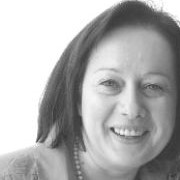 | 2021/06/23    During sporting activities such as cycling and mountain hiking as well as climbing stairs over several floors; i.e. when lifting the legs was necessary: After a short time or a few minutes, shortness of breath with rapid, briefly held breaths and a "pulling" of the muscles in the left thigh. | |||||
2021/06/17    For 20 years, there have been several situations in his life when he has reacted with epilepsy-like symptoms: First, when he has been frightened. Second, when he has felt strong emotions such as fear, sadness, fatigue or even euphoria. And, interestingly, also and especially strongly when the hamstring reflex test was performed during examinations. Once the causative event was found 20 years ago, the symptoms could be successfully resolved afterwards. | ||||||
 | 2020/04/26  Die Mutter kommt mit ihrem 11-jährigen Mädchen zu mir in die Praxis – sie wirkt weinerlich und ausgelaugt. Sie erzählt mir dass ihre Tochter von Geburt an nie ruhig liegen, sitzen oder stehen kann. Seit sie zur Schule geht, entwickelt sie zusätzlich Tics: Zuckungen am ganzen Körper und verschiedene Bewegungen die sie nicht steuern kann ... | Zuckungen, Hyperaktivität | ||||
2017/12/18     Prediction of a single epileptic seizure in a two-year-old boy, based on observation of the behavior of the conflict active phase of the associated special program. |
